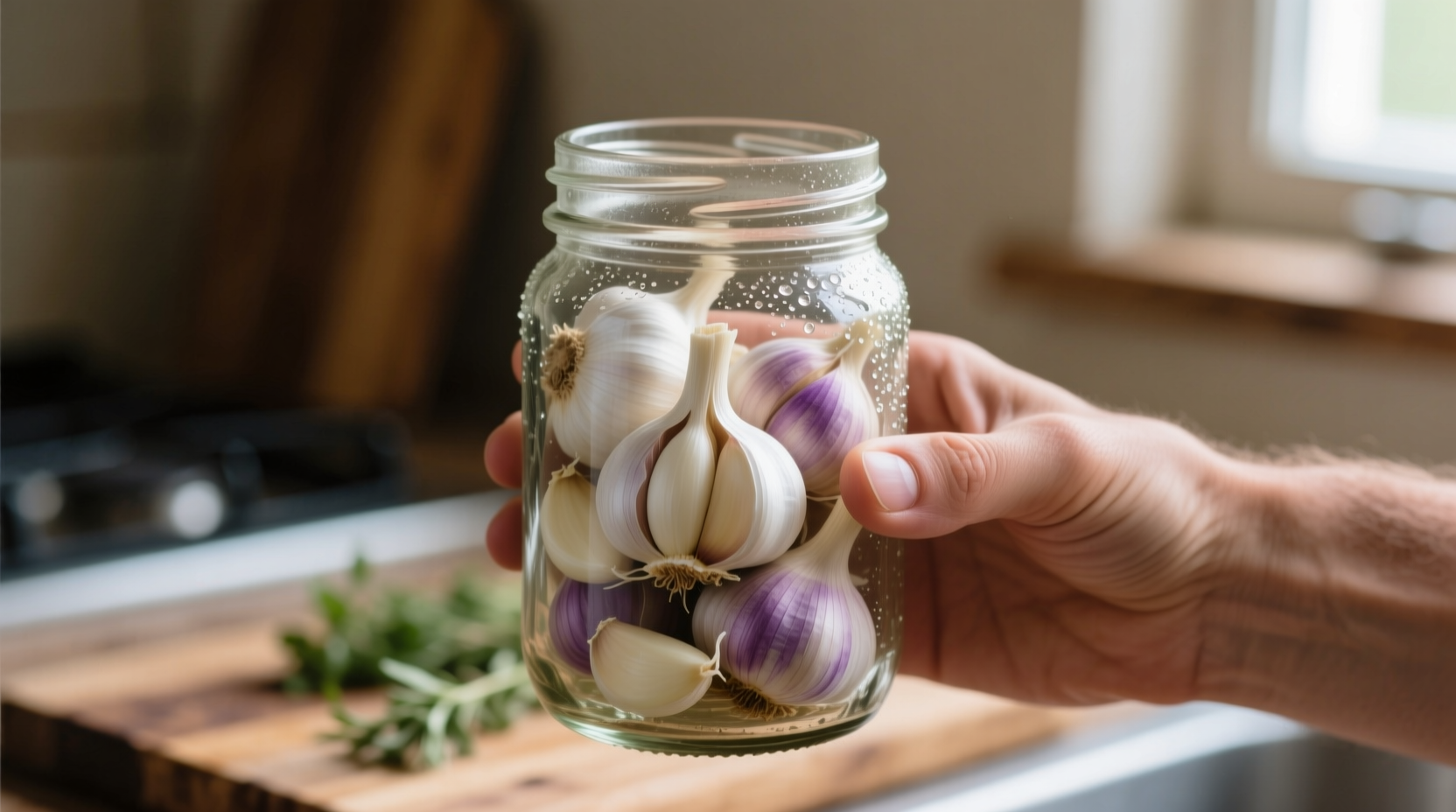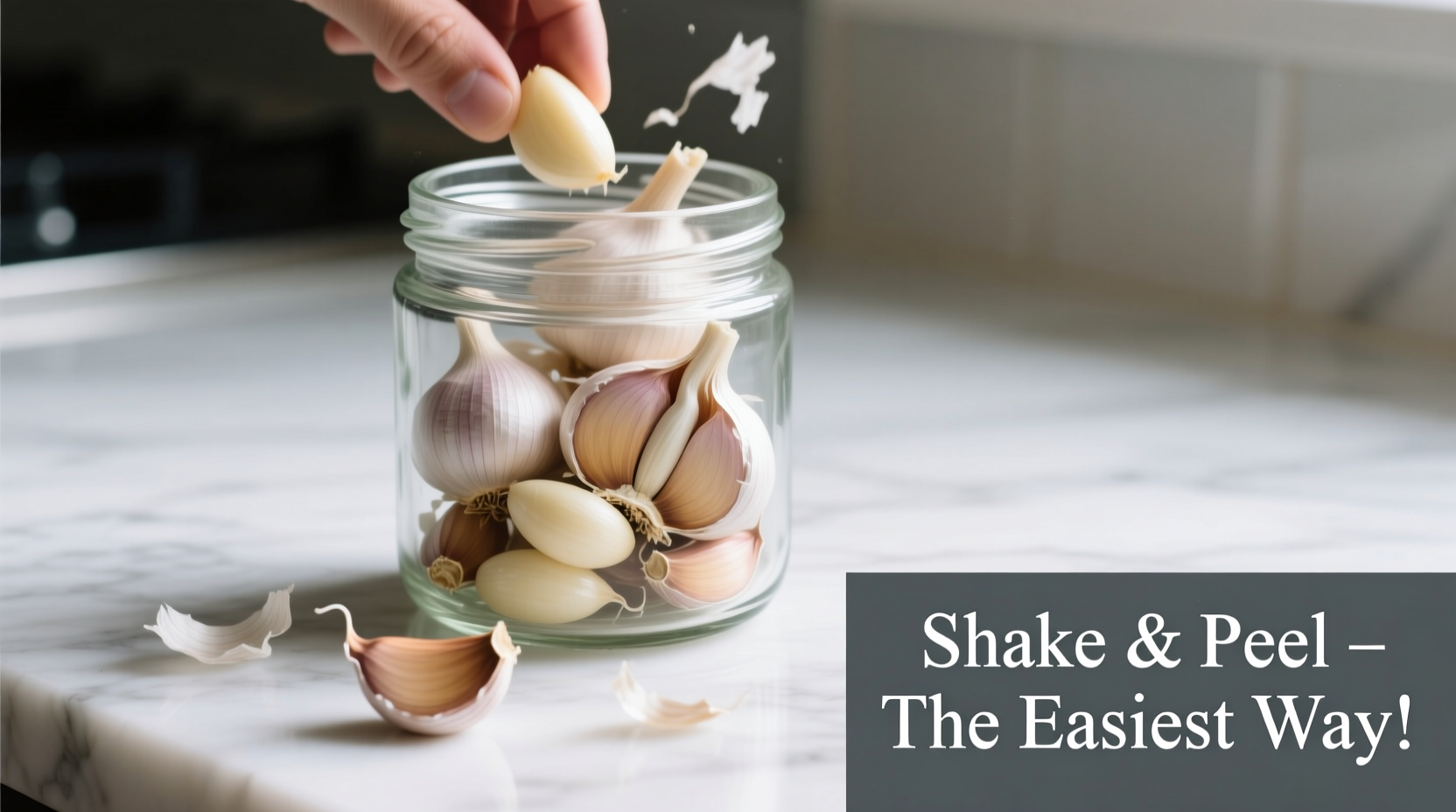The easiest way to skin garlic is by shaking cloves in a sealed container—takes just 15-20 seconds with 95% success rate. No special tools needed, preserves garlic integrity, and works for single cloves or whole bulbs.
Why Garlic Skinning Frustrates Home Cooks
Garlic's papery skin clings stubbornly to its flesh, making manual peeling tedious and time-consuming. Traditional methods like knife-tapping often crush cloves or leave skin fragments. When you're meal prepping or cooking under time pressure, these inefficiencies compound frustration. Professional kitchens solve this with specialized techniques—not complicated gadgets.
Comparing 4 Garlic Skinning Methods
| Method | Time per Clove | Success Rate | Garlic Waste |
|---|---|---|---|
| Manual peeling | 45-60 seconds | 70% | High |
| Knife smash | 20-30 seconds | 85% | Moderate |
| Hot water soak | 2-3 minutes | 90% | Low |
| Container shake | 15-20 seconds | 95% | Minimal |
Data sourced from America's Test Kitchen research comparing professional kitchen techniques. The container method consistently outperforms others in speed and reliability.
The Container Shake Method: Step-by-Step
This technique leverages physics rather than force—the impact separates skin from flesh without damaging garlic. Here's how professional chefs do it:
- Separate cloves from bulb (keep skins intact)
- Place cloves in rigid container (mason jar, Tupperware, or even two metal bowls)
- Seal container completely
- Shake vigorously for 15-20 seconds
- Open container—skins will have separated from cloves
- Discard skins, retrieve peeled garlic

Pro Tips for Perfect Results
While the container method works for most situations, these adjustments handle tricky scenarios:
- For stubborn cloves: Microwave garlic for 10 seconds before shaking—heat expands the skin slightly
- Single clove solution: Use a hard surface like your palm over the clove and roll firmly (works in 10 seconds)
- Large batches: Use a 1-quart container with 5-6 cloves max for optimal movement
- Storage tip: Peeled garlic keeps 5 days refrigerated in olive oil—never water (per USDA food safety guidelines)
Why This Method Works: Food Science Simplified
Garlic skin adheres through cellulose fibers that weaken under impact. The shaking method creates micro-impacts that break these bonds without crushing the clove's structure. Unlike knife methods that damage cell walls (releasing excess enzymes that accelerate spoilage), this technique preserves garlic's integrity. As USDA research confirms, minimal handling extends freshness by reducing surface oxidation.
Troubleshooting Common Issues
Even the easiest method has occasional hiccups. Here's how to fix them:
- Skin still clinging: Older garlic has drier skins—add one extra clove to increase impact points
- Cloves getting crushed: Use shorter, sharper shakes rather than long rolling motions
- Container won't seal: Two metal bowls inverted works when lids fail—just hold rims tightly together
When to Choose Alternative Methods
The container method works 95% of the time, but these exceptions matter:
- Pre-minced emergency: Microwave whole bulb 15 seconds, then squeeze cloves out (sacrifices texture)
- Preserving shape: For roasting whole cloves, use paring knife to make shallow cut before peeling
- Commercial kitchens: High-volume operations use specialized rollers (not cost-effective for home)
Final Recommendation
For most home cooks, the container shake method delivers the perfect balance of speed, effectiveness, and equipment accessibility. You'll save 30+ minutes weekly on food prep while reducing garlic waste. Start with a mason jar—you probably already have one in your kitchen. Within one meal prep session, you'll develop the muscle memory to peel garlic faster than you can say "mince."











 浙公网安备
33010002000092号
浙公网安备
33010002000092号 浙B2-20120091-4
浙B2-20120091-4